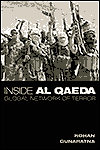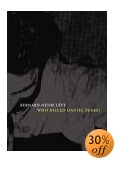|
|
J&K: The Writing on the Barrel of
the Gun
Praveen Swami
Special Correspondent, Frontline
In Jammu and Kashmir (J&K), bullets don't
just bear death: they are also a medium of political communication.
In November 2002, just after Chief Minister Mufti Mohammad Sayeed took
office, two grenades went off outside his home on the outskirts of
Srinagar. The grenades were not intended to kill, but to forcefully
remind the new Chief Minister of the need to honour his party's promises
of dialogue with Islamist groups and a scaling back of offensive
counter-terrorism operations.
Sayeed refused, at the time, to leave his home for more secure quarters.
In a grand gesture, he even brought down security barriers on Gupkar
Road, home to the residence of his predecessor Farooq Abdullah as well
as top functionaries of the Border Security Force, Intelligence Bureau
and the Research and Analysis Wing. The opening of Gupkar Road, along
with Sayeed's media-hyped visits to downtown Srinagar, was a visible
symbol of the new 'healing touch' agenda.
Over the next months, however, the real-world limitations of the
'healing touch' became evident. Although there were some prisoner
releases, their scale was nowhere near adequate to satisfy the Islamist
Right, which had backed his People's Democratic Party (PDP). Unabated
violence and pressure from the PDP's coalition partners also ensured
that no generalised cutback in counter-terrorist operations could be
realised.
Sayeed began spending increasing amounts of time outside Srinagar and,
when he was present there, often chose to spend the night at the
Dachigam wildlife sanctuary. This wasn't, of course, the consequence of
a new interest in nature, but of blunt warnings from intelligence and
police officials of the likelihood of an assassination attempt. The J&K
Government also began constructing a new fortified residence for the
Chief Minister on Mohammad Ali Road, which he occupied last month after
vacating his family residence.
It is important, then, to consider the political meaning of the
murderous October 17, 2003, Lashkar-e-Toiba (LeT)
attack on the new official residence especially prepared to shield
Sayeed from such dangers. As J&K Government spokesperson Kul Bhushan
Jandial has pointed out, the Chief Minister was not at home when the
attack took place. In this sense, he was obviously not its target. Yet,
it is profoundly unlikely that the terrorists who executed the attack
would not have taken care to monitor the Chief Minister's movements -
something they could have done simply by walking up and down the
pavement on the busy public road that runs along his house.
It is at least possible that the attack was not intended to kill but,
just as in November 2002, to send a signal. Top PDP functionaries have
held meetings with senior figures of the Hizb-ul-Mujahideen (HM)
in recent months. One such meeting, held in late August near Pahalgam,
involved the HM's central Kashmir 'commander', Abdul Rashid Pir. The
meetings followed complaints by the HM, which not-so-tacitly backed the
PDP's election campaign last year, that the ruling party had failed to
deliver on its end of their deal. While the unpopular Special Operations
Group (SOG) had been disbanded by the PDP, operations by the Army,
paramilitaries and police continued apace. 205 terrorists were killed
last month, a record level of success.
Soon after the Pahalgam meeting, Pir left for Pakistan, and the HM ended
an undeclared truce that had commenced after the elections. On September
6, 2003, the Hizb targeted an Army convoy passing by the Parimpora Fruit
Market on Srinagar's outskirts, following this attack up with a
succession of similar offensive operations. Although the PDP had been
calling for the inclusion of the Hizb in a political dialogue on the
future of J&K, the terrorist organisation was making clear that it
wanted more than mere polemical support.
Sayeed has, in the past, responded to Islamist concerns by using the
limited leverage available to him. Earlier this month, for example, he
called on the Union Government to replace its official interlocutor on
J&K, N.N. Vohra, with someone more acceptable to the secessionists. His
daughter, the PDP's star campaigner Mehbooba Mufti, has not once
congratulated the security forces for successes against terrorism, and
remained silent even after the elimination of the terrorist who
organised the assault on Parliament House, Shahbaz Khan alias Ghazi
Baba. PDP legislators and functionaries, any security official in J&K
will testify, routinely call up demanding the quick release of arrested
suspects.
None of this, terrorist groups are starting to realise, actually adds up
to much. Caught in a coalition whose constituents cannot or will not be
seen as being soft on terror, Sayeed's room for manoeuvre is extremely
limited. The near-tragic attack on the Chief Minister's residence, it
seems probable, was intended to provide additional incentive for Sayeed
to deliver on his party's promises, whatever the consequences. Like
other Chief Ministers in similar situations of crisis, Sayeed has two
choices: he buckles in, or fights back. The decision he makes will shape
the course of events in J&K in coming years.
Just as important, the assassination attempt should provoke
introspection among policy makers in both New Delhi and Washington. The
United States has been content to cajole Pakistan's military
establishment to keep violence in J&K at levels that will not provoke a
full-blown crisis. Although violence is, indeed, at levels marginally
lower than in 2001, the assassination attempt shows that terrorism
simply cannot be calibrated to avoid potentially crisis-inducing events.
The Government of India, in turn, needs to work out just how it might
respond to major acts of terrorism - or might find itself floundering as
it did in December 2001, after the attack on Parliament House in New
Delhi.
Courtesy:
South Asia Terrorism Portal |


